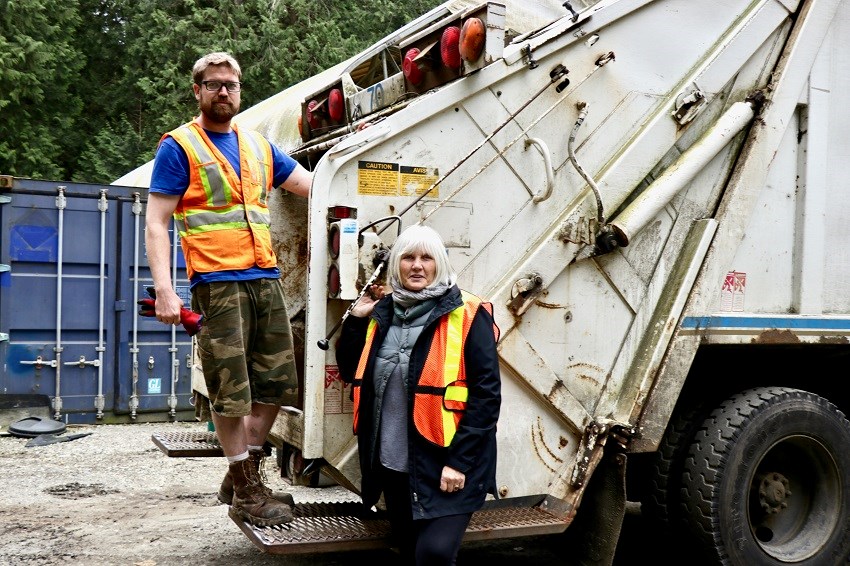Three times in one shift last Wednesday, Bowen Waste workers feared for their safety.
Now they’re asking islanders for some distance. To service the island, Bowen Waste workers stand on the back of the garbage truck, holding on as the truck lumbers across the island.
At intervals the workers leap down from the steel mesh platform to heave a load into the truck’s bucket.
Louise McIntosh, owner and operator of Bowen Waste, says that following too closely, passing the truck at inappropriate times and not leaving enough space to safely pass, has been a growing issue, and last Wednesday was the final straw.
“We had a near hit of one of the staff on the back of the truck. We had a passing of a vehicle on a blind corner into oncoming traffic. And we had an instance of someone following so closely behind that when the truck stopped, they almost hit the crew member,” she said.
“All of those instances are the preamble to a possible catastrophic event.”
Though McIntosh reported the incident to police, with only vehicle descriptions and no licence plate numbers, there was not much they could do. So McIntosh is appealing to the public to see that a day like last Wednesday doesn’t happen again.
The ask is simple: slow down, be aware of the people on the back of the truck and don’t pass unless the vehicle has pulled off to the side and there’s enough room to pass.
Andrew McKay has worked for Bowen Waste for nearly five years. He’s one of the guys on the back of the truck. He said that people in a hurry can be a problem.
“Maybe sometimes it doesn’t matter if you’re going to miss a boat or you’re not going to make it to daycare on time to pick up your kid or something like that because it might give us the peace of mind,” he said.
McKay had a few suggestions for islanders on the roads including maintaining three or four car lengths between the garbage truck and following vehicles. For oncoming traffic, if the area looks even slightly dicey, a short honk to let workers know that the vehicle is coming would be appreciated.
In rainy weather McKay said workers are often wearing heavy rain gear with the hoods up so their peripheral vision and hearing can be dampened.
McKay also noted that drivers often look to the workers on the back of the truck for instruction as to whether or not a vehicle can pass but those hanging on the back cannot give such directions.
“You have to make your own decisions and please make good decisions because it’s kind of scary back there at times,” he said.



